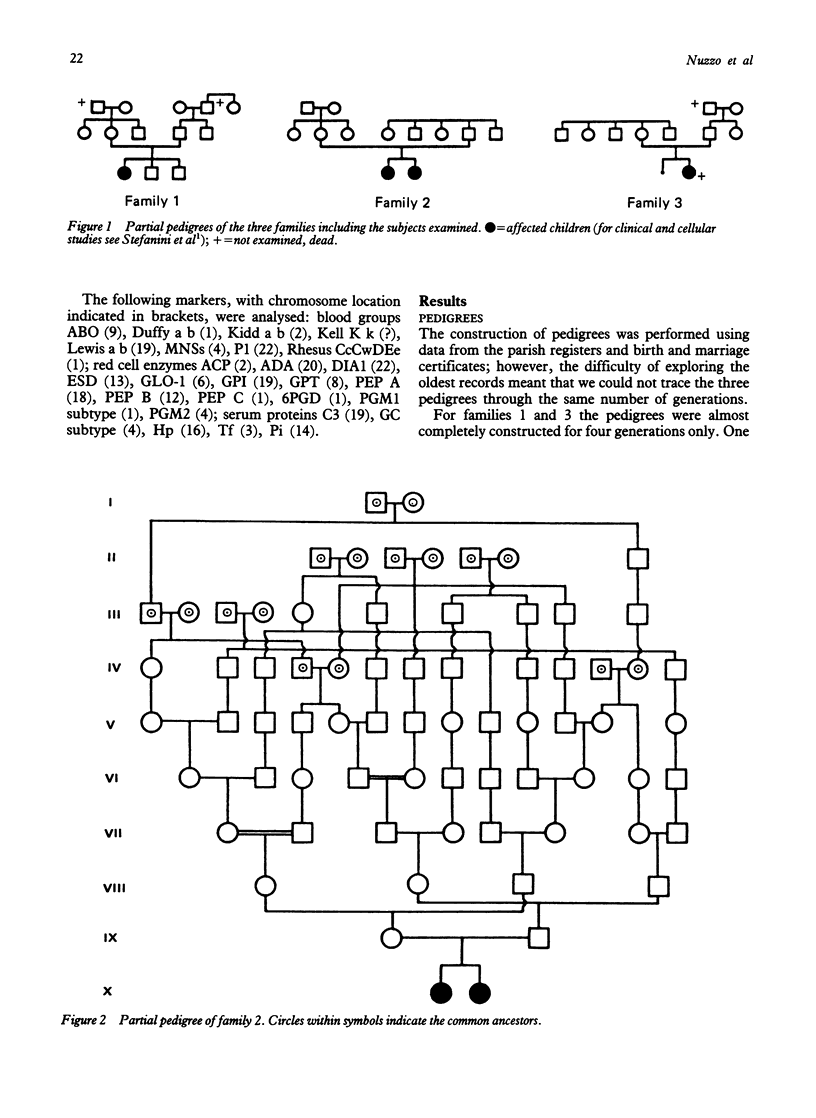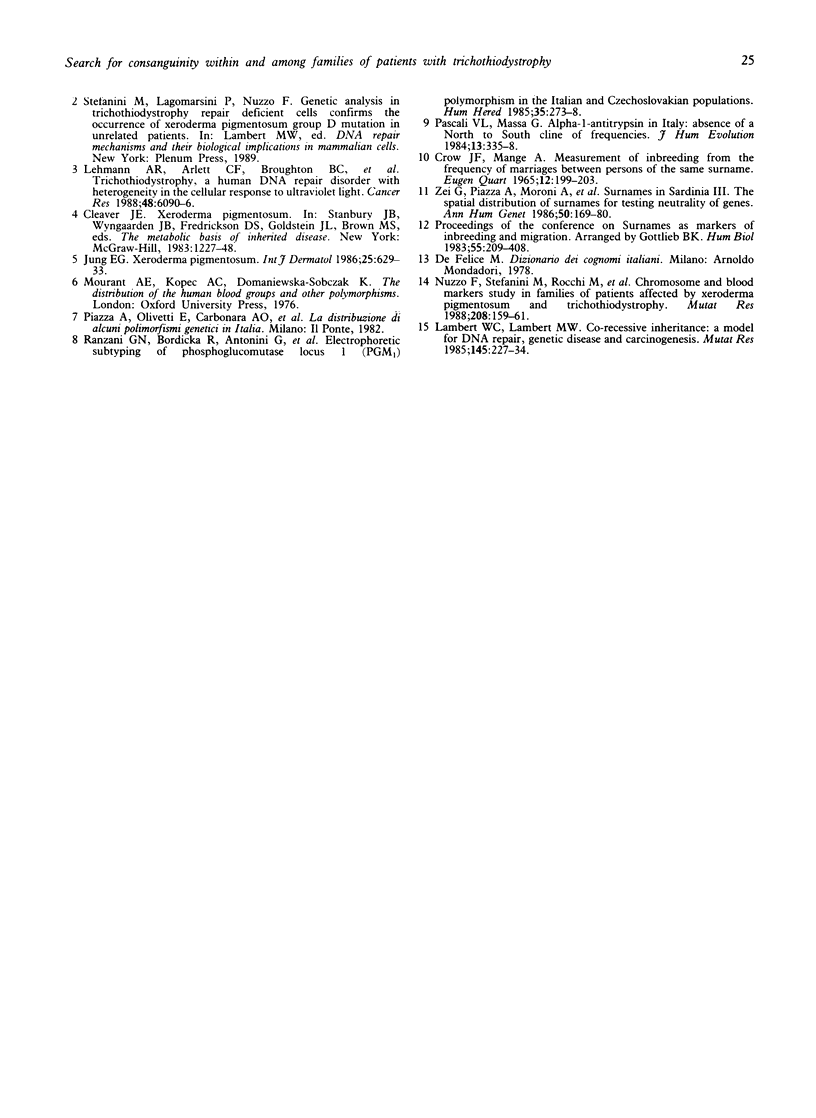Abstract
The association of two rare hereditary disorders, trichothiodystrophy (TTD) and xeroderma pigmentosum (XP), was found in four patients from three families, apparently unrelated but living in the same geographical area. In order to test the hypothesis of a common ancestor, consanguinity within and among the families was checked using three different approaches: reconstruction of genealogical trees, typing of blood markers, and surname analysis. The results of the three types of analyses strengthen the hypothesis that, in at least two out of the three families, the genetic defect determining the TTD/XP phenotype is identical by descent, as a consequence of remote inbreeding. This implies that if two mutations are responsible for the two diseases they are at linked loci or affect the same gene.
Full text
PDF




Selected References
These references are in PubMed. This may not be the complete list of references from this article.
- Crow J. F., Mange A. P. Measurement of inbreeding from the frequency of marriages between persons of the same surname. Eugen Q. 1965 Dec;12(4):199–203. doi: 10.1080/19485565.1965.9987630. [DOI] [PubMed] [Google Scholar]
- Jung E. G. Xeroderma pigmentosum. Int J Dermatol. 1986 Dec;25(10):629–633. doi: 10.1111/j.1365-4362.1986.tb04522.x. [DOI] [PubMed] [Google Scholar]
- Lambert W. C., Lambert M. W. Co-recessive inheritance: a model for DNA repair, genetic disease and carcinogenesis. Mutat Res. 1985 May;145(3):227–234. doi: 10.1016/0167-8817(85)90031-8. [DOI] [PubMed] [Google Scholar]
- Lehmann A. R., Arlett C. F., Broughton B. C., Harcourt S. A., Steingrimsdottir H., Stefanini M., Malcolm A., Taylor R., Natarajan A. T., Green S. Trichothiodystrophy, a human DNA repair disorder with heterogeneity in the cellular response to ultraviolet light. Cancer Res. 1988 Nov 1;48(21):6090–6096. [PubMed] [Google Scholar]
- Nuzzo F., Stefanini M., Rocchi M., Casati A., Colognola R., Lagomarsini P., Marinoni S., Scozzari R. Chromosome and blood marker studies in families of patients affected by xeroderma pigmentosum and trichothiodystrophy. Mutat Res. 1988 Jul;208(3-4):159–161. doi: 10.1016/0165-7992(88)90053-x. [DOI] [PubMed] [Google Scholar]
- Ranzani G. N., Brdicka R., Antonini G., Pardini R., Santachiara-Benerecetti A. S. Electrophoretic subtyping of phosphoglucomutase locus 1 (PGM1) polymorphism in the Italian and Czechoslovakian populations. Hum Hered. 1985;35(5):273–278. doi: 10.1159/000153561. [DOI] [PubMed] [Google Scholar]
- Stefanini M., Lagomarsini P., Arlett C. F., Marinoni S., Borrone C., Crovato F., Trevisan G., Cordone G., Nuzzo F. Xeroderma pigmentosum (complementation group D) mutation is present in patients affected by trichothiodystrophy with photosensitivity. Hum Genet. 1986 Oct;74(2):107–112. doi: 10.1007/BF00282072. [DOI] [PubMed] [Google Scholar]
- Zei G., Piazza A., Moroni A., Cavalli-Sforza L. L. Surnames in Sardinia. III. The spatial distribution of surnames for testing neutrality of genes. Ann Hum Genet. 1986 May;50(Pt 2):169–180. doi: 10.1111/j.1469-1809.1986.tb01036.x. [DOI] [PubMed] [Google Scholar]


